Ed Gein is perhaps one of the most notorious American serial killers due to the extreme nature of his crimes and the state of his home when he was arrested. Also known as “the Butcher of Plainfield” or “the Plainfield Ghoul,” Gein was a convicted killer and body snatcher active in Plainfield, WI from 1946 to 1957 after the death of his mother left him alone and in a deranged mental state.
Gein’s crimes feature a variety of gruesome body mutilations including the creation of several skin masks he wore to be closer to his mother, and the collection of various women’s body parts which he decorated throughout his home including heads, bones, tanned skin lampshades and furniture coverings, and a variety of clothing items crafted from human skin.
Because of the extreme nature of these crimes, Gein has been the inspiration for more horror movie killers than probably any other real-life criminal. Starting first with the infamous Norman Bates, and continuing on to recent years with characters like Dr. Oliver Thredson in American Horror Story: Asylum, directors have often used his crimes as inspiration for their own twisted villains.
Psycho (1960)
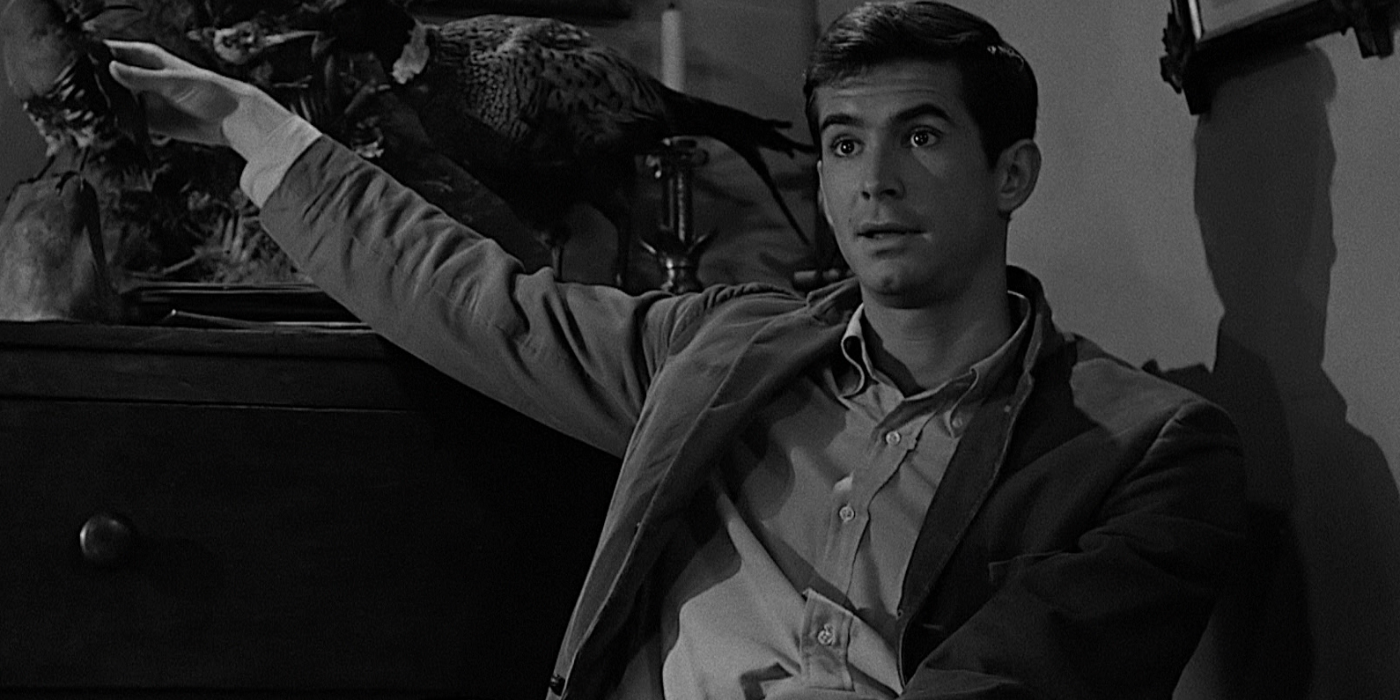
The first piece of media to be inspired by Ed Gein’s crimes, Robert Bloch’s novel, Psycho was published in 1959, with Alfred Hitchcock’s movie adaptation to follow shortly after. At the time of Gein’s arrest, Bloch was living 35 miles away from Plainfield in Weyauwega.
Though Bloch was not aware of the Gein case at that time, he began writing with “the notion that the man next door may be a monster unsuspected even in the gossip-ridden microcosm of small-town life“, Paula Guran explains in a review of Bloch’s book, Behind the Bates Motel. When the real details of Gein’s case were finally released, Bloch was surprised to discover how closely Norman Bates resembled Gein in both his crimes and his motivations and inserted a line alluding to Gein in one of the final chapters of the book to create a parallel.
Then, there was the Hitchcock film adaptation Psycho, which remains one of the most beloved classic horror movies, rated number one on the American Film Institute’s list of one-hundred most thrilling films. Hitchcock has been upfront about the fact that Norman Bates is wholly Bloch’s creation whom he simply adapted for the screen, but it’s obvious that with Gein’s crimes being more a part of the cultural zeitgeist at the creation of the film than for the writing of the novel. He may have played a slightly larger role in inspiring Anthony Perkins’ performance as Norman Bates.
The clear similarity between Norman Bates and Ed Gein is his mother complex. Both men lived in isolation with a heavily religious mother who dominated them. When their mother died, both men descended into madness, keeping her alive within their own minds, at times “becoming” their mothers, and taking murderous action because of it.
Deranged (1974)
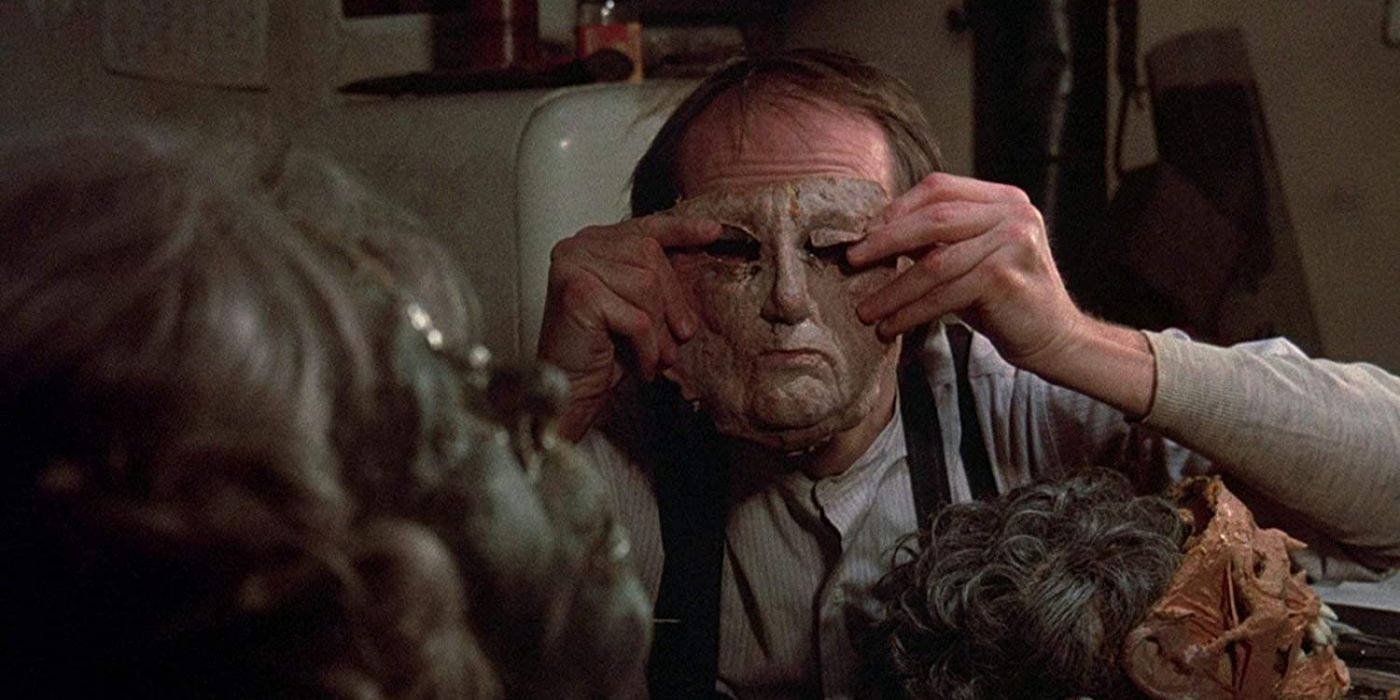
Deranged is a 1974 Canadian-American horror film loosely based on the life of Ed Gein, which follows Ezra Cobb, a middle-aged man in a rural Midwestern community who begins a string of murders and grave robberies after his mother’s death. Like Gein, Cobb’s mother was extremely religious and raised him to be a misogynist; after her death, Cobb embarks on a string of serial murders and grave robberies.
The story of Deranged also follows very similar beats to that of Gein’s life and his eventual capture. Cobb’s fascination with and the killing of waitress Mary Ransum mirrors Gein’s murder of tavern owner Mary Hogan. Cobb’s treatment of Sallie Mae’s body in Deranged also follows closely with Gein’s treatment of hardware store owner Bernice Worden.
The notable difference is that Deranged plays up the necrophilia aspect, as the film was also known as Deranged: Confessions of a Necrophile, though Gein himself never committed necrophilia. Aside from this detail, the story is very similar to the crimes committed by Gein.
The Texas Chainsaw Massacre (1974)
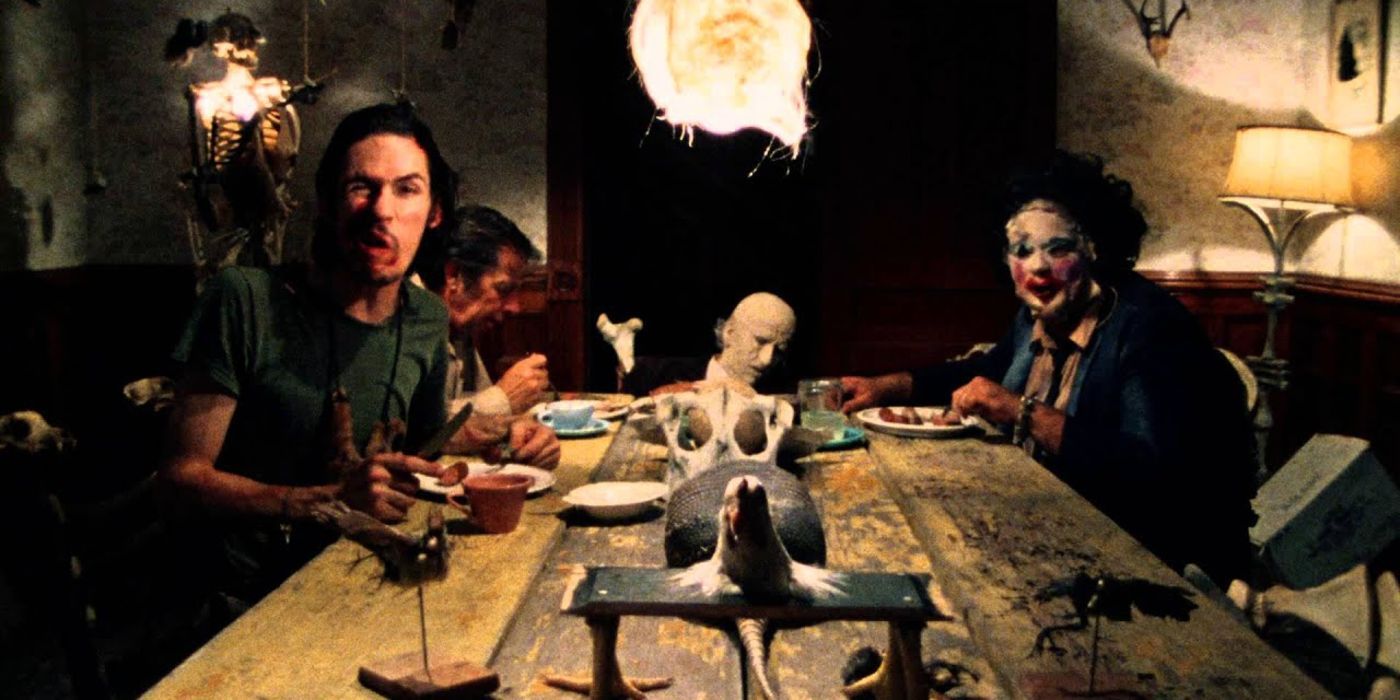
In Tobe Hooper’s The Texas Chainsaw Massacre, he and Kim Henkel modeled the character of Leatherface after Ed Gein, also taking inspiration from Elmer Wayne Henley, who famously assisted serial killer Dean Corll by bringing him victims. Gein’s inspiration on Leatherface, however, is a bit more straightforward, as the character demonstrates a history of wearing women’s clothes, mutilating bodies, and making masks and other garments out of human skin.
Kim Henkel closely studied Ed Gein’s case when writing the screenplay for Texas Chainsaw Massacre, and used a lot of the more gruesome details of his crimes as inspiration for the character of Leatherface. Texas Chainsaw Massacre is the first film to take inspiration from Ed Gein without focusing on his relationship with his mother. It instead shifts the spotlight to his fascination with human skin and body mutilation, though Leatherface is shown to dress up in women’s clothing; this detail isn’t specifically related to a maternal figure.
The Silence of the Lambs (1991)
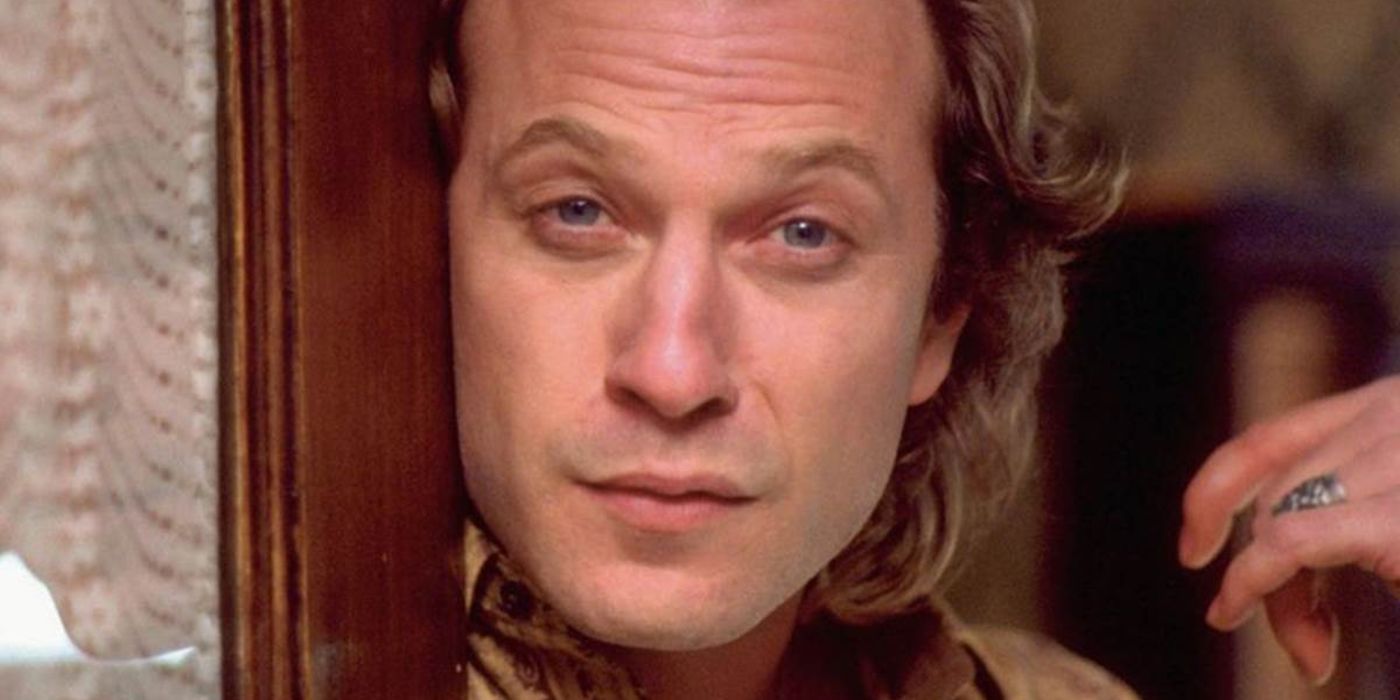
Jonathan Demme’s 1991 film, Silence of the Lambs, has become well-known for its depiction of the charismatic and thoroughly terrifying serial killer/cannibal, Hannibal Lecter. However, the central plot of the film focuses on Agent Clarice Starling’s hunt for Buffalo Bill, a killer who attacks overweight women and skins the corpses.
Silence of the Lambs is based on the book of the same name by Thomas Harris, published in 1988. Harris based the character of Buffalo Bill on a combination of American serial killers including Jerry Brudos, a serial killer and necrophile who strangled four women in Oregon and dressed up in their clothing; Ted Bundy, an infamous serial killer who used the ruse of pretending to be injured, often with the addition of a cast or crutches, several times as a ploy to ask his victims for help before attacking them; Gary M. Heidnik, who kidnapped, raped, and tortured six women in Philadelphia whom he held in a pit in his basement; Edmund Kemper, the Co-Ed Killer, who, like Gumb, killed his grandparents as a teenager “just to see what it felt like“; Gary Ridgway, the Green River Killer, who dumped the bodies of his first five victims into the Green River and was also known for inserting foreign objects into the corpses; and Ed Gein.
The portion of Gumb’s serial killer traits most people remember—because it’s the most shocking—are Gein’s crimes in mutilating the bodies to create a skin suit. Taking his propensity for corpse mutilation and desire to become his mother through a collection of women’s skin clothing, Thomas Harris elaborated on that motivation and those crimes to create a killer so obsessed with femininity and metamorphosis that he kills to create a women’s skin suit and be reborn as a woman.
Ed Gein (2000)
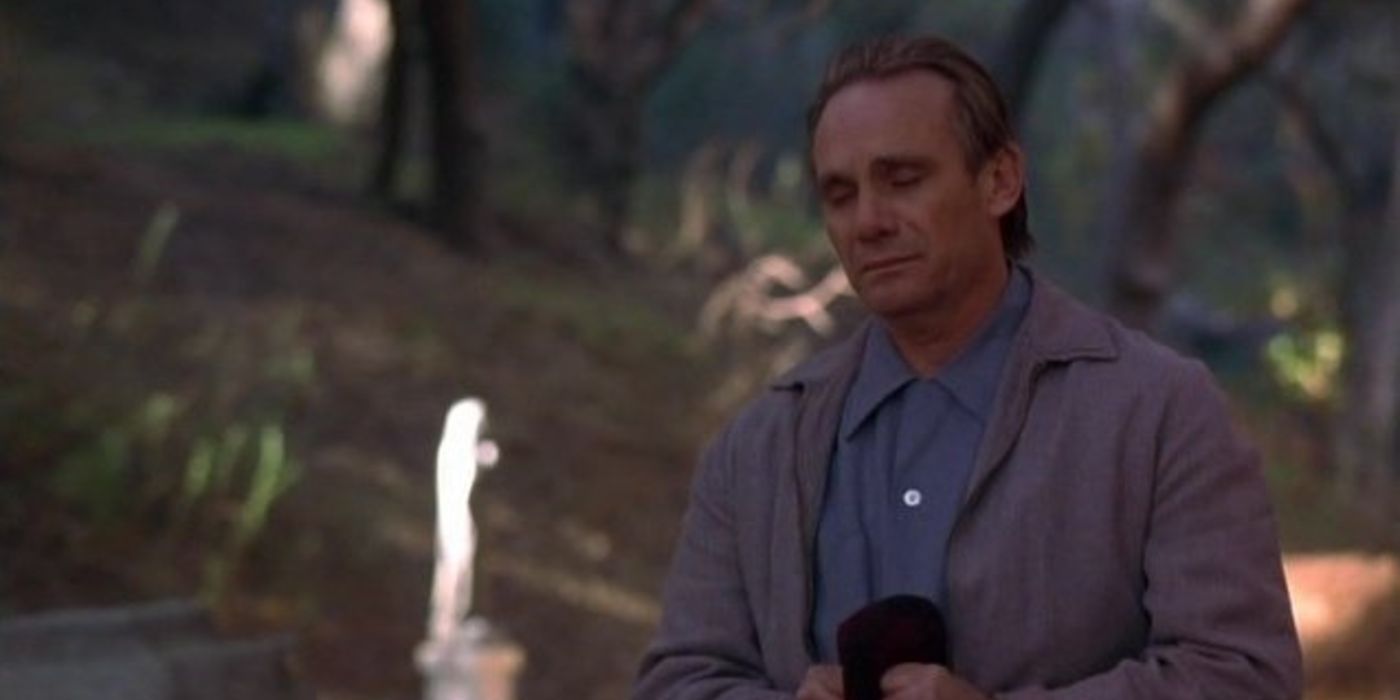
Released as Ed Gein in the United States and Australia, but also known as In the Light of the Moon, this film closely follows the crimes of Ed Gein, starting with his abuse at the hands of his overly religious mother and alcoholic father and ending with his capture and the officers’ discovery of his home. The film, while underwhelming and receiving mostly negative reviews from both critics and viewers, pays close attention to Gein’s life in an attempt to create a faithful adaptation of his life on film, though the portrayal is somewhat inconsistent.
The director, Chuck Parello (Henry: Portrait of a Serial Killer), wanted the film to be an exploration of his protagonist’s psychology, something that he tried to do with all of his films. He took direct influence from Gein’s life, including both his parents and the death of his brother, which may or may not have been Gein’s fault. Parello also paints Gein as a cannibal, and while Gein did have a fascination with stories of cannibal tribes and Nazi atrocities, he never admitted to actually practicing cannibalism.
House of 1000 Corpses (2003) & The Devil’s Rejects (2005)
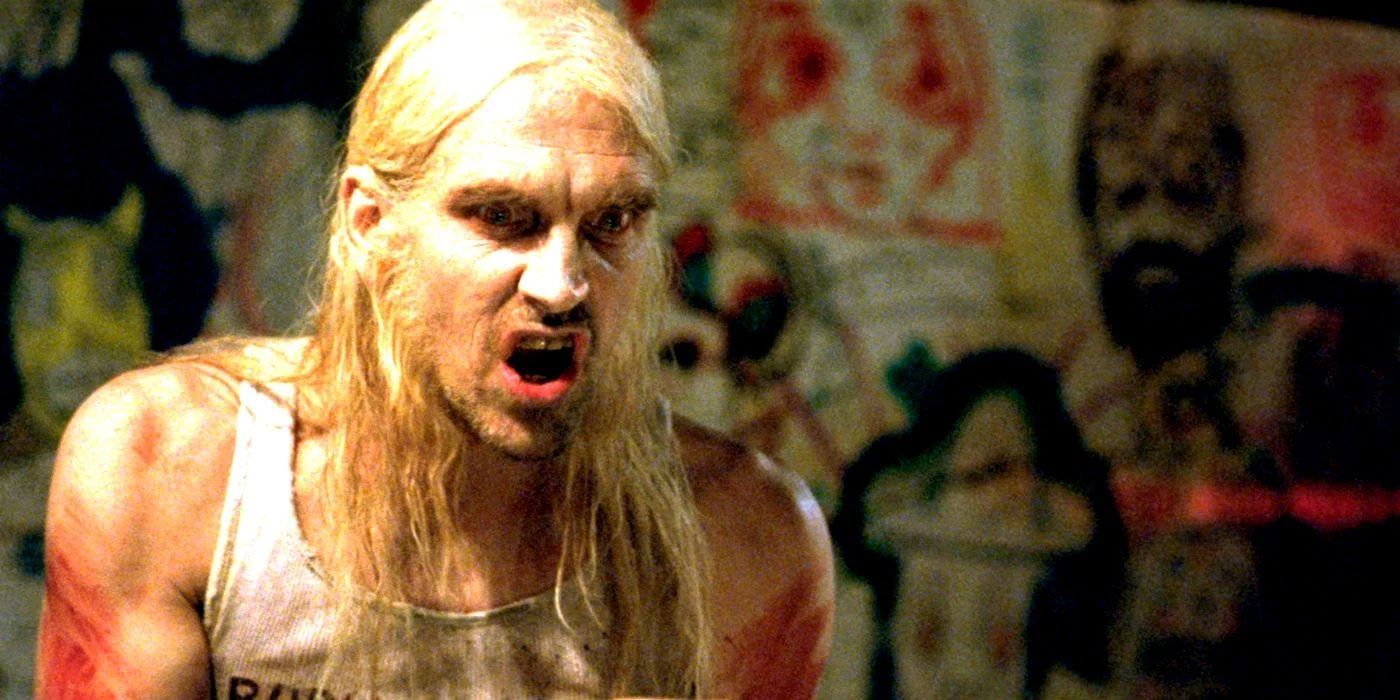
Rob Zombie’s cult classic films, House of 1000 Corpses and The Devil’s Rejects incorporate a lot of cultural references including naming all the family members after Groucho Marx characters of the 1930s. However, the character Otis B. Driftwood (Bill Moseley), is a direct reference to Ed Gein. Otis, named after Marx’s character from A Night at the Opera, is the most violent member of the Firefly family, known to be a sadistic necrophiliac who crafts the freaks for Captain Spaulding’s museum, making sculptures out of his victims. Notably, he wears his victims’ skin on multiple occasions as a costume as well. These two most salient aspects of Ed Gein’s crimes serve as the inspiration for the character, appearing in two of Rob Zombie’s films about the Firefly family.
Ed Gein: The Butcher of Plainfield (2007)
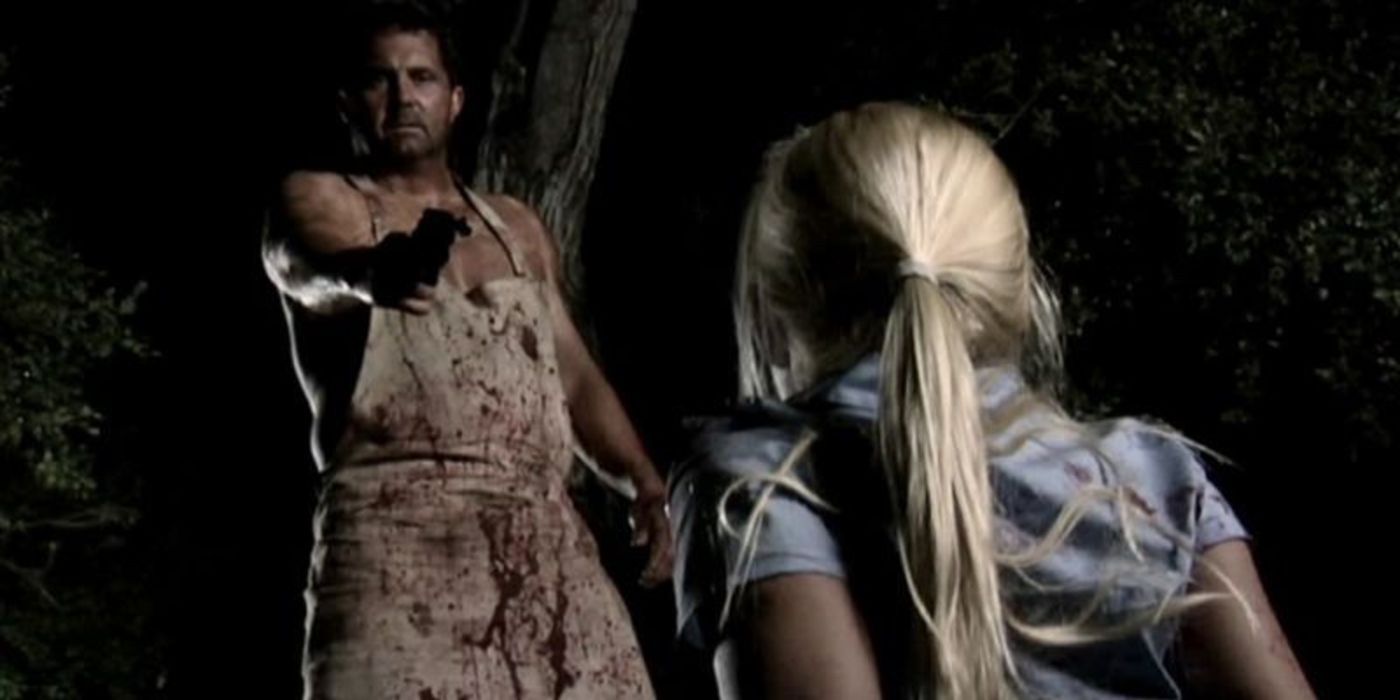
The most modern horror movie that takes inspiration from Ed Gein, depicting his crimes more than half a century after his arrest, is Ed Gein: The Butcher of Plainfield. A direct-to-video horror film starring Kane Hodder of Friday the 13th fame, The Butcher of Plainfield pays attention to Gein’s history while fictionalizing the events leading up to his capture. The plot of the movie centers around Ed Gein kidnapping and slaughtering a woman named Vera Mason along with a sheriff’s deputy and his girlfriend, as well as the ensuing race to catch him before it’s too late. It’s not a highly accurate depiction of Gein’s life and crimes, but the name of the film clearly indicates that it’s inspired by the real-life killer. While other major serial killers, such as Ted Bundy, have been used as a template for more modern horror movie killers, Ed Gein’s crimes have become deeply entrenched in horror pop culture, and surely will prevail in the genre’s future.




